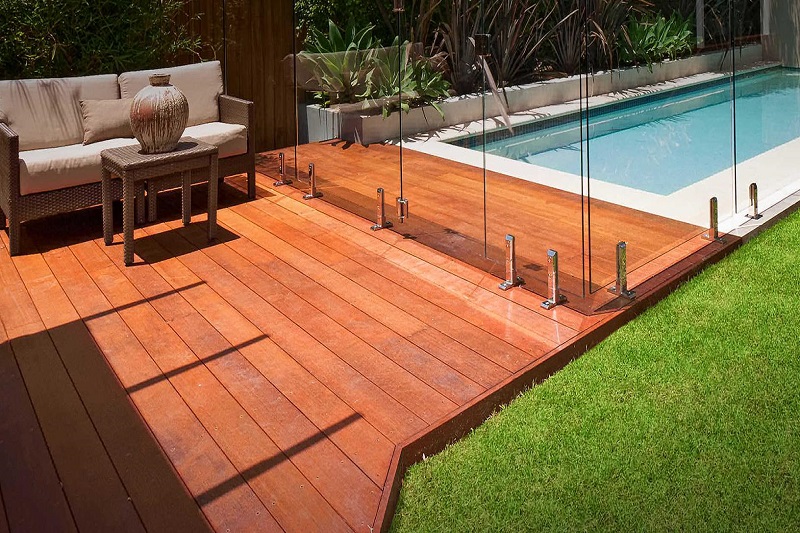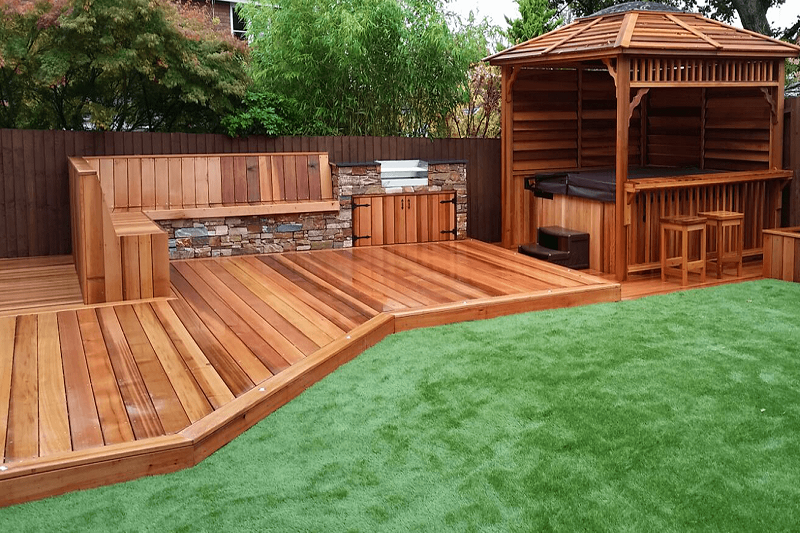 |
| Decking |
Decking is a versatile and stylish addition to any outdoor space, providing a functional and aesthetic upgrade to your home. Whether you're looking to create a cozy relaxation spot, an outdoor dining area, or a platform for social gatherings, decking can transform your yard or patio into a beautiful extension of your living space. In this article, we will explore the benefits of decking, various materials and designs, installation tips, and maintenance guidelines to help you make the most of your decking project.
Benefits of Decking
-
Aesthetic Appeal: Decking adds visual appeal to your outdoor area. With a wide range of materials, colors, and styles available, you can choose a design that complements your home's architecture and your personal preferences. Wooden decks, for example, lend a warm and natural look, while composite decks offer a sleek and modern appearance.
-
Increased Usable Space: By creating an elevated platform, decking maximizes your usable outdoor space. It can be a functional extension of your home where you can set up seating, tables, and even outdoor kitchens. This extra space allows you to enjoy the outdoors while still benefiting from the comforts of your home.
-
Durability: High-quality decking materials are built to withstand the elements and offer long-lasting performance. Properly maintained decking can last for many years without showing signs of wear and tear.
-
Value Addition: Decking can enhance the value of your home. If you decide to sell your property, a well-maintained deck can be a major selling point, attracting potential buyers and increasing your property's market value.
Types of Decking Materials
-
Wood Decking: Wood is a classic and popular choice for decking. Options like pressure-treated pine, cedar, redwood, and exotic hardwoods are available. Each type of wood has its own unique appearance and characteristics, making it easy to find one that suits your style and budget. However, wood decking requires regular maintenance, such as staining or sealing, to protect it from the elements.
-
Composite Decking: Composite decking is a low-maintenance alternative to wood. It's made from a blend of recycled wood fibers and plastic, offering the look of real wood without the maintenance. Composite decking is resistant to rot, fading, and staining, making it a durable choice for those who want to enjoy their outdoor space without the hassle of frequent upkeep.
-
PVC Decking: PVC decking is made from synthetic materials that are exceptionally resistant to moisture, mold, and mildew. It provides a smooth, splinter-free surface and is an excellent choice for those living in humid or rainy climates.
-
Aluminum Decking: Aluminum decking is a lightweight and durable option that requires minimal maintenance. It is fire-resistant, resistant to rot and insects, and can handle heavy loads. While it may not have the natural look of wood, it offers a sleek and modern aesthetic.
Design and Layout
The design and layout of your decking are crucial aspects of creating a functional and beautiful outdoor space. Consider the following design elements:
-
Size and Shape: Determine the size and shape of your deck based on your available space and intended use. Rectangular, square, or multi-level designs are common options. Your deck should complement your home's architecture and landscaping.
-
Railings and Balusters: Choose railings and balusters that match your deck's design and safety requirements. These elements can be purely functional or add to the aesthetic appeal of your space.
-
Built-in Features: Consider incorporating built-in features such as benches, planters, or even a pergola to enhance the functionality and appearance of your deck.
 |
| Decking |
Installation Tips
Installing decking requires careful planning and attention to detail. Here are some tips to ensure a successful installation:
-
Foundation: A sturdy and level foundation is crucial. Depending on your location and the type of deck, you may use concrete footings, piers, or a wooden substructure.
-
Proper Fastening: Use the appropriate fasteners and hardware to secure your decking boards to the substructure. Follow the manufacturer's recommendations for the specific material you're using.
-
Leave Gaps: Leave small gaps between the deck boards to allow for water drainage and expansion and contraction due to temperature changes.
-
Slope for Drainage: Ensure that your deck has a slight slope away from your home to prevent water from pooling on the surface.
Maintenance Guidelines
Regular maintenance is essential to keep your decking in top condition. Follow these guidelines to ensure your deck remains a beautiful and functional outdoor space:
-
Cleaning: Regularly clean your deck with a gentle cleaner and a brush or pressure washer to remove dirt, grime, and mold.
-
Sealing or Staining: Wooden decks should be sealed or stained every 1-3 years to protect them from moisture and UV damage.
-
Inspect and Repair: Check your deck for loose or damaged boards, railings, and hardware. Replace or repair any issues promptly to prevent further damage.
-
Protect Against Scratches: Use furniture pads and avoid dragging heavy objects to prevent scratches and damage to your deck's surface.
Conclusion
Decking is a fantastic way to enhance your outdoor space, adding value and charm to your home. Whether you prefer the classic beauty of wood or the low-maintenance benefits of composite or PVC, a well-designed and properly maintained deck can provide a comfortable and inviting area for relaxation, entertaining, and outdoor living. With careful planning and the right materials, your decking project can become a beautiful and enduring addition to your home.











No comments:
Post a Comment